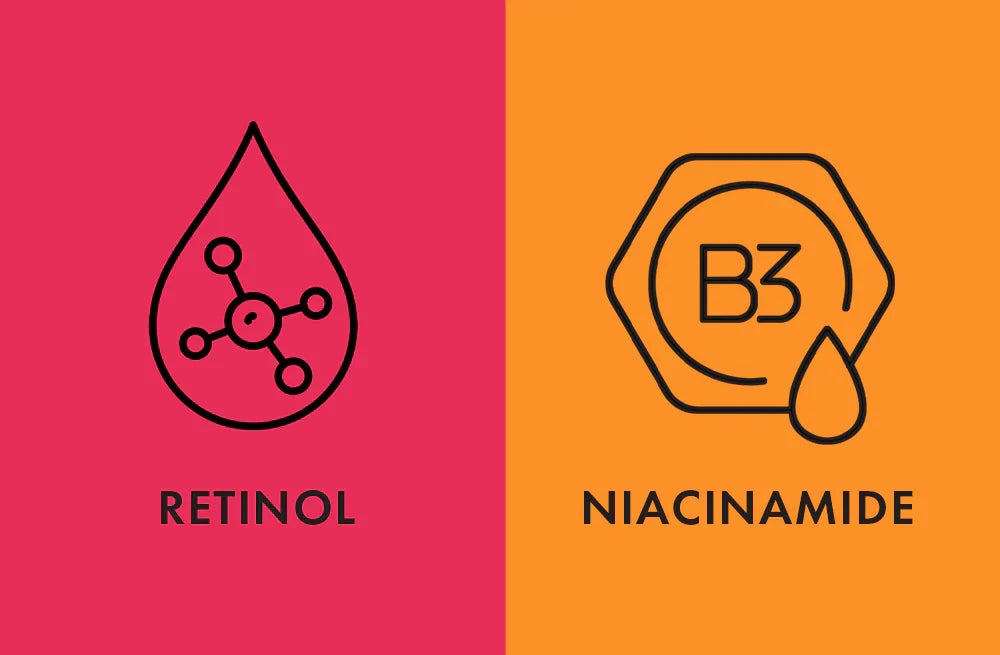
Retinol vs. Niacinamide: Which One Actually Wins the Anti-Aging Battle?
Let’s be real—when it comes to anti-aging, everyone’s looking for that one magic ingredient. And two names always pop up: retinol and niacinamide. But which one actually delivers the best results? If you're debating where to invest your time (and money), let’s break it all down in plain English.
What Do They Actually Do?
Both retinol and niacinamide bring their A-game, but they work in totally different ways:
- Retinol: A vitamin A derivative that speeds up cell turnover, boosts collagen, and smooths out fine lines.
- Niacinamide: A form of vitamin B3 that strengthens the skin barrier, fights inflammation, and evens out skin tone.
Want the full scoop on how these ingredients interact with others? Check out The Science of Active Ingredients: Niacinamide, Vitamin C & Hyaluronic Acid.
Retinol: The Heavyweight Champion of Anti-Aging
Retinol has a reputation for a reason—it’s one of the most researched and proven ingredients for reducing wrinkles and improving skin texture. But, let’s be honest, it’s not always the easiest to use.
Pros:
- Clinically proven to smooth fine lines and wrinkles.
- Improves skin texture and elasticity over time.
- Can also help with acne and clogged pores.
Cons:
- Can be irritating, causing dryness and peeling.
- Not always ideal for sensitive skin types.
- Requires diligent sunscreen use (because it makes skin more sun-sensitive).
Niacinamide: The Low-Key Overachiever
Niacinamide might not have the same flashy reputation as retinol, but don’t underestimate it. This ingredient does a lot—and without the drama.
Pros:
- Strengthens the skin barrier, keeping skin healthy and resilient.
- Hydrates, reduces redness, and soothes irritation.
- Helps with dark spots, hyperpigmentation, and overall brightness.
Cons:
- Works more gradually compared to retinol.
- Not as aggressive in stimulating collagen.
- Best used alongside other ingredients, like vitamin C. (Check out Aging Skin: How to Combine Vitamin C + Niacinamide to see why.)
Can You Use Them Together?
Absolutely! Retinol and niacinamide are actually an amazing pair. Niacinamide helps offset some of retinol’s harsher effects, making it more tolerable for those with sensitive skin. If breakouts are your main concern, read Niacinamide for Acne: How It Reduces Breakouts & Scars to see how it helps.
Here’s how to layer them like a pro:
- Start with niacinamide – It hydrates and preps the skin.
- Follow with retinol – Begin with a low concentration and build up slowly.
- Moisturize & SPF – If you’re using retinol, sunscreen is non-negotiable.
The Verdict: Which One Wins?
If your #1 goal is reducing wrinkles and boosting collagen, retinol is the clear winner. But if you want a gentler, more versatile ingredient that strengthens and brightens the skin, niacinamide is the way to go.
The best approach? Use both! Just introduce them gradually and pay attention to how your skin reacts.
Aging gracefully isn’t about picking just one ingredient—it’s about finding the right combination for your skin. Now that you know the pros and cons of retinol vs. niacinamide, you can build a routine that works best for you.

